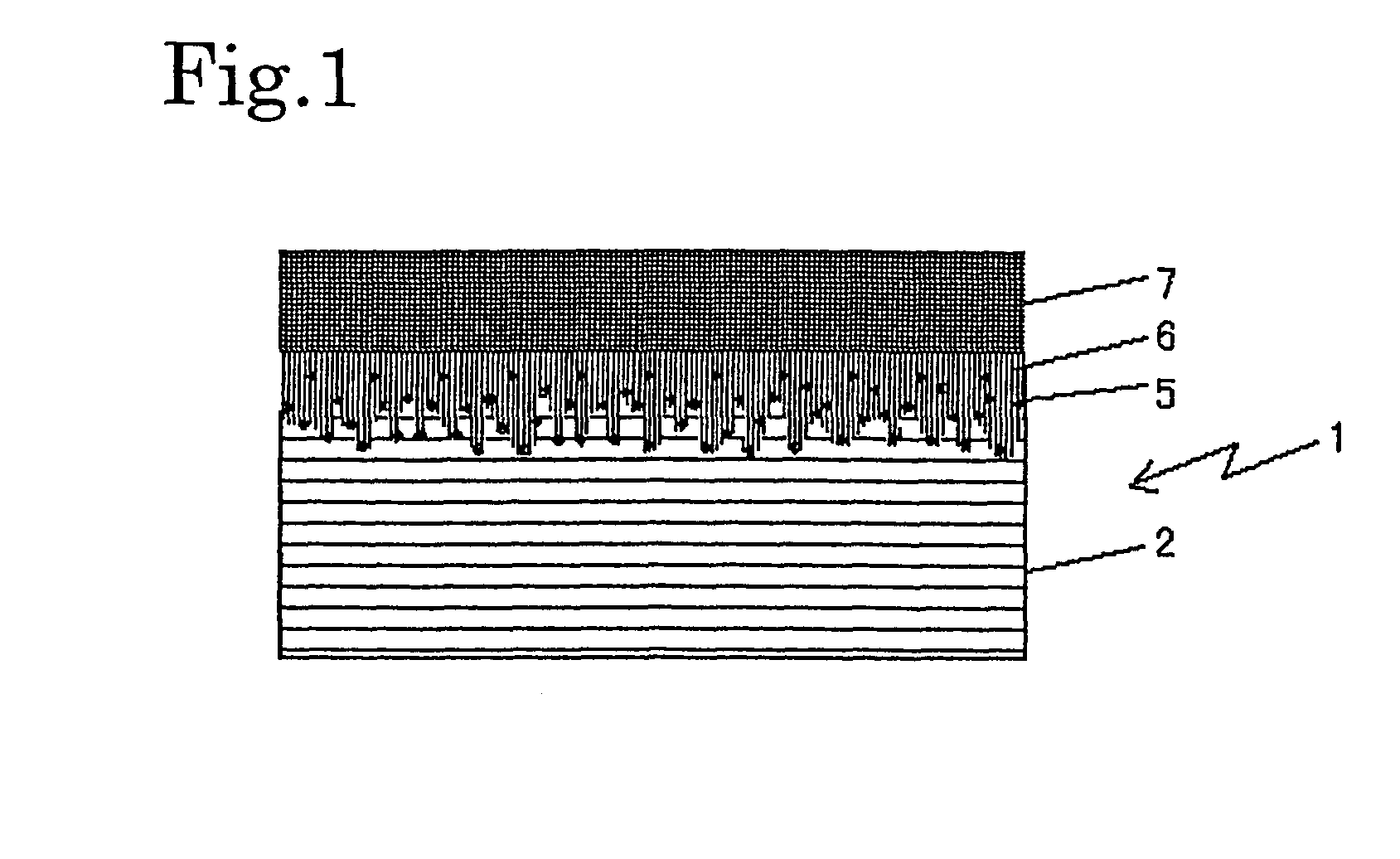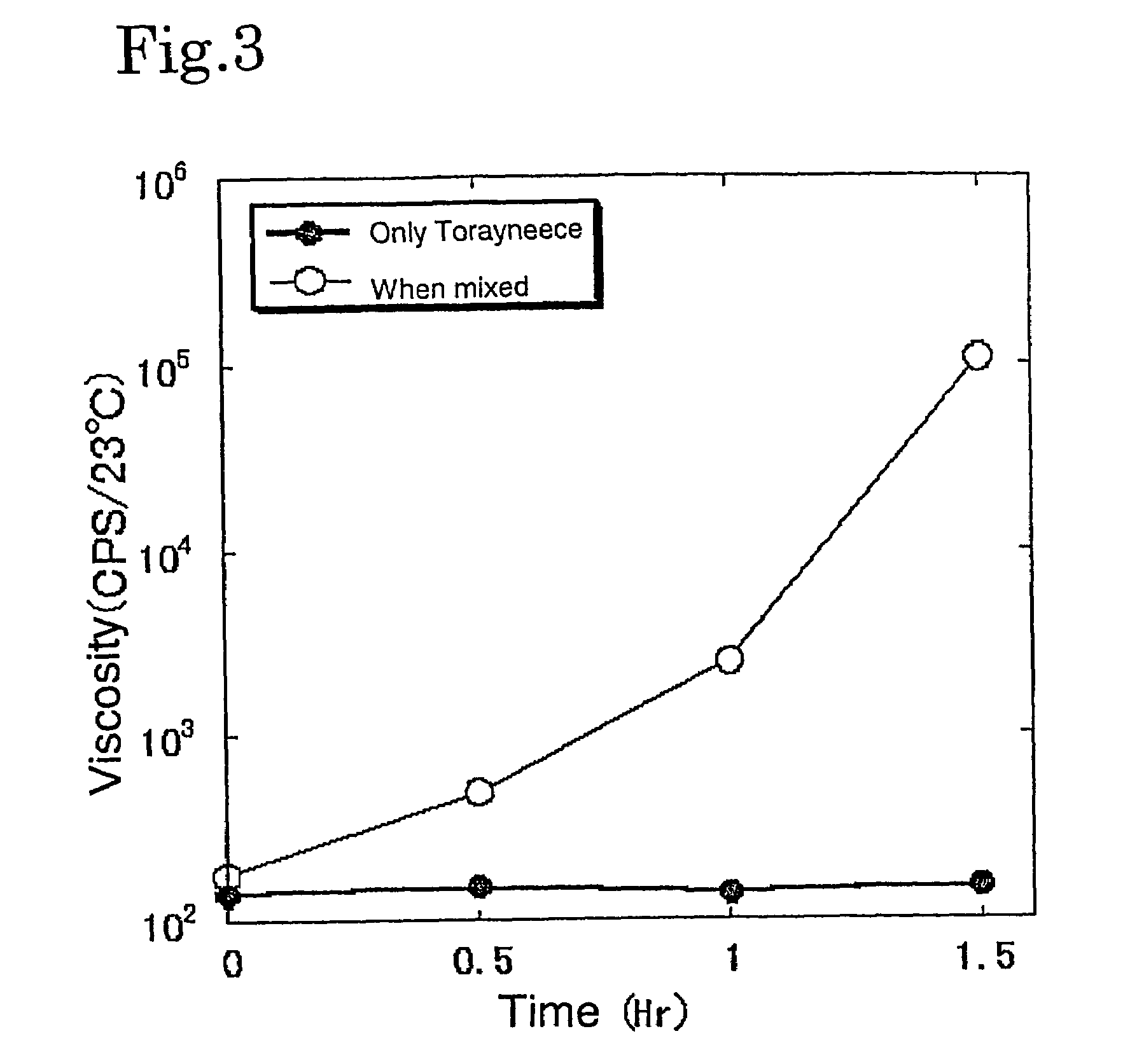Polyimide resin precursor solution, laminates for electronic components made by using the solution and process for production of the laminates
- Summary
- Abstract
- Description
- Claims
- Application Information
AI Technical Summary
Benefits of technology
Problems solved by technology
Method used
Image
Examples
embodiment 1
[0049]A solution in which commercialized palladium acetylacetone complex (abbreviated as a palladium complex, hereinafter) was dissolved in n-methyl 2-pyrrolidinone (abbreviated as an NMP, hereinafter) was added into a polyimide resin precursor varnish “Torayneece” #3000 made by Toray Industries, Inc., and the varnish solution was adjusted so that the palladium complex content per varnish solution would be 1 wt / vol %. The vanish solution contains approximately 5 wt % of palladium complex per polyimide resin precursor.
[0050]It should be appreciated that 1 wt / vol % means, for instance, the concentration of dissolution of palladium complex 0.01 g in “Torayneece” varnish solution 1 ml.
[0051]Then, a test piece 10×10 cm (thickness 50 μm) of polyimide substrate “UPILEX-S” made by Ube Industries, Inc. was treated with 1% NaOH aqueous solution and 1% HCl aqueous solution, washed with pure water, and dried, before applying the varnish solution with a bar coater and drying at the room temperat...
embodiment 2
[0057]The content of palladium complex in the polyimide resin precursor solution of the Embodiment 1 was modified to 0.5 wt / vol % to perform the same treatment, obtaining laminates for electronic components of 22 μm in copper film thickness. The peel strength between the metal portion and the polyimide resin layer of the obtained substrate was measured through the method defined by JISC-6481 to obtain 12N / cm (1200 gf / cm).
embodiment 3
[0058]The UV irradiation quantity of the Embodiment 1 was modified to 7500 mJ / cm2 to perform the same treatment.
PUM
| Property | Measurement | Unit |
|---|---|---|
| Fraction | aaaaa | aaaaa |
| Fraction | aaaaa | aaaaa |
| Fraction | aaaaa | aaaaa |
Abstract
Description
Claims
Application Information
 Login to View More
Login to View More - R&D
- Intellectual Property
- Life Sciences
- Materials
- Tech Scout
- Unparalleled Data Quality
- Higher Quality Content
- 60% Fewer Hallucinations
Browse by: Latest US Patents, China's latest patents, Technical Efficacy Thesaurus, Application Domain, Technology Topic, Popular Technical Reports.
© 2025 PatSnap. All rights reserved.Legal|Privacy policy|Modern Slavery Act Transparency Statement|Sitemap|About US| Contact US: help@patsnap.com



